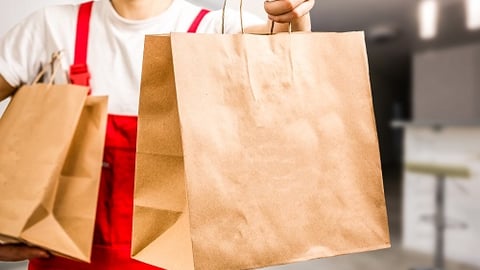Lingering Labor Shortages, Surging Inflation Coax Restaurant Operators To Say ‘Yes’ to Tech
In 2023, things are starting to look pretty much like they once did — on the surface. Industries worldwide were affected in varying degrees in the wake of COVID-19, but none more than the hospitality industry. Restaurants aren’t quite through having to cope with labor shortages, which puts an asterisk next to the restaurant industry revival. While restaurant workers feel overworked and underpaid, customers are frustrated by longer wait times and slower service. At the same time, inflationary pressures are weighing heavily on the cost of restaurant operations. QR code scan-order-pay uses universally familiar technology to improve the dining experience for customers, lighten the workload for waitstaff, and increase profits for restaurant owners.
The Post-Pandemic Aftermath
The National Restaurant Association has the receipts for the damage inflicted on the restaurant industry as a result of the pandemic. Restaurant and food service sales fell $240 billion short of their 2020 pre-pandemic predictions. Over 110,000 restaurants had to close their doors, and some were forced to close them permanently. Restaurant industry employment dropped to 86% of its pre-pandemic numbers, and 2.5 million jobs were lost. And despite positive future indicators, over 450,000 restaurant jobs have yet to be filled, the largest employment deficit in the United States. The Great Resignation continues to be a trend, where employees voluntarily quit their jobs in a quest for higher wages and a better work/life balance, which makes retaining current staff increasingly difficult. The average restaurant employee turnover rate of 23% has risen to 32%.
Inflationary Fallout
Not a day goes by without someone uttering the words inflation and recession. The cost of food has gone up nearly 10%. The purchasing power of a dollar dropped to 85% of what it was three years ago. At full-service restaurants, prices are up 8.2%, and limited-service is up 6.7%, which is higher than the overall inflation rate but still lower than the grocery store inflation rate of 11.3%.
The higher cost of groceries may be responsible for the fact that people in the U.S. spent $86.6 billion at restaurants compared to $78.9 billion on groceries in January 2023 and are eating out an average of 3.6 times a week. But they are growing impatient; a recent survey found that, even at the finest restaurants, 80% of diners reported they would only be willing to wait up to 30 minutes for a table, while 26% said they would only wait 15 minutes.
QR Code Scan-Order-Pay
The restaurant industry tends to trail behind when it comes to technology. But the pandemic became an accelerator; 40% of restaurant operators incorporated technology solutions into their businesses to survive the pandemic, such as mobile payment options.
Over 6.92 billion people own a smartphone, 86% of the world’s population. That’s one of the reasons QR code scan-order-pay technology is such an easy transition. Guests simply scan a QR code at their table using their smartphone, order from an interactive visual menu, and then pay with one click. Customers enjoy browsing the menu and receiving prompts and suggestions along the way, like food and drink pairings and current specials and promotions.
Because diners take more time perusing the menu, they tend to spend more, which means better tips for servers without the need for upselling. Bigger checks and bigger tips improve staff retention. Managers can re-align their staff for more efficient operation and better flexibility enabling servers to take on larger sections with less effort, spending less time taking food and alcohol orders and more time elevating the guest experience.
More efficient and accurate ordering leads to faster delivery, which reduces walkouts, and fewer mistakes lead to fewer comps. QR code menu systems also track guests’ dining trends and encourage them to come back and take advantage of customer loyalty programs and other perks.
Integrating QR code scan-order-pay into existing restaurant operations enhances employee satisfaction and retention, boosts revenue and efficiency, and creates a relaxing and enjoyable dining experience for guests.
About the Author
Brian Duncan is the President of me&u USA. With over a decade of leadership experience in hospitality, Duncan is a veteran in the industry with an unrivalled resume that demonstrates disruption through technology. He holds a strong passion for the industry and is determined to build a better future for hospitality.
Founded in 2018 by Stevan Premutico, me&u is a global order & pay platform utilizing advanced features to drive success in hospitality businesses. Specializing in pubs and bars, me&u presents the smarter way to order and pay, using technology which allows restaurant patrons to view menus on their phones via a quick tap or scanning a QR code.





